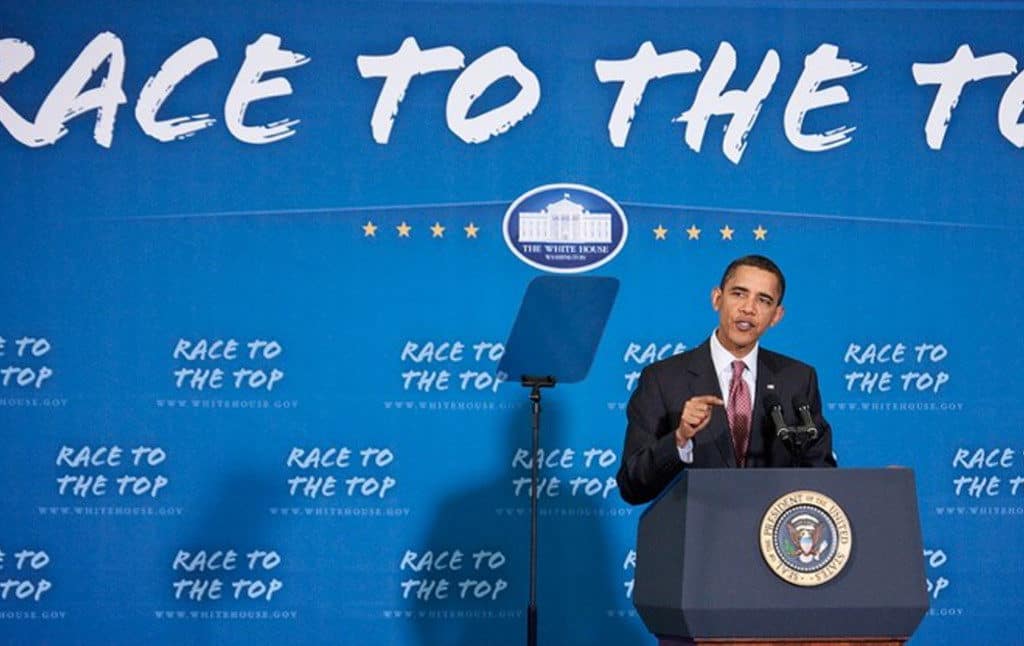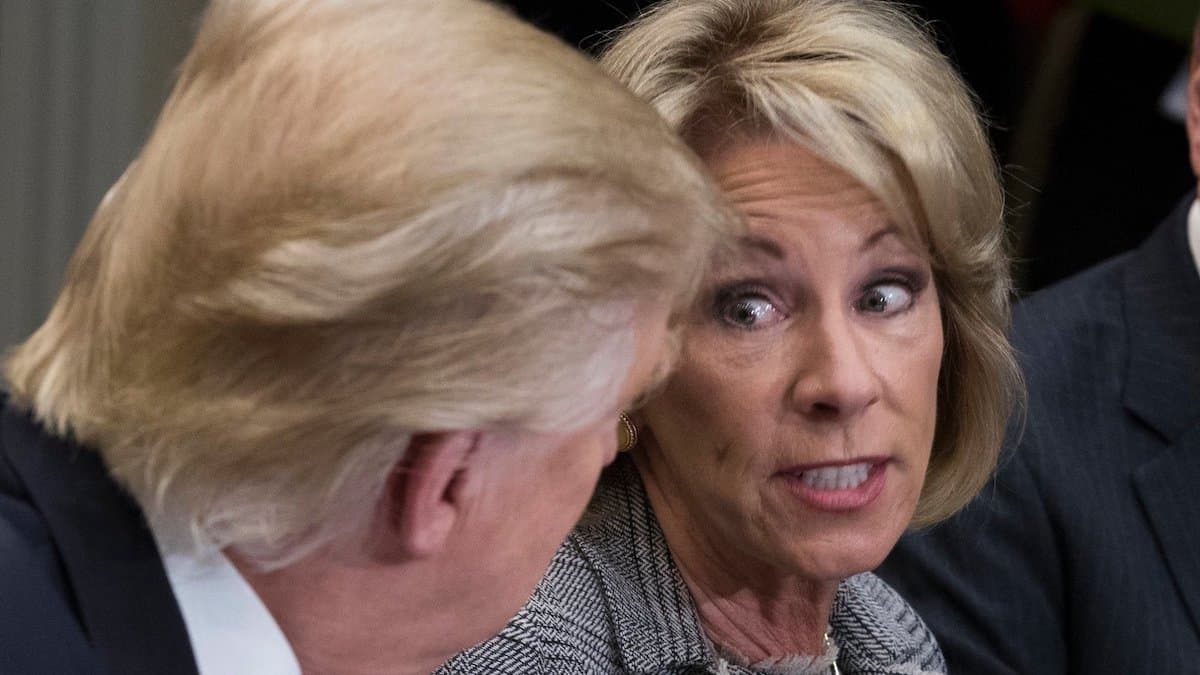“Corporate education reform” refers to a specific set of policy proposals currently driving education policy at the state and federal level. These proposals include:
-Stan Karp
Director of the Secondary Education Reform Project, Education Law Center
CORPORATE EDUCATION REFORM
TIMELINE
Corporate Education Reform
What is School Choice?
School choice allows public education funds to follow students to a public school, private school, charter school, home school, virtual school or any other learning environment parents choose for their kids. Discussions of choice can be confusing because “choice” involves so many different options. However, when discussions of school choice do take place, they typically revolve around the following three main choices: public schools, private schools, and charter schools. Let’s take a look at how each of them is funded.
School Funding
Public schools – public educational institutions and are funded by taxes.
Private schools – funded privately through tuition and charitable donations from current families, alumni, faculty, trustees, past parents, and friends of the school.
Charter schools – operated as private institutions, but still receive public funding.
Types of School Choice
School vouchers are education tax dollars that are diverted from public schools to help subsidize the tuition of private and religious schools.
Charter schools are tuition-free, independent public schools exempt from most of the rules, regulations, and statutes that apply to traditional public schools. Charter schools receive taxpayer money, but are privately run with no local oversight. As a result, charters have greater degree of freedom by districts and states when it comes to staffing, curriculum, instruction, finances etc.
Charters
Charter school laws vary from state to state, but essentially, they are operated under a contract or “charter.” The charter outlines the details of how the school operates including details regarding how the school will be organized and managed, what the students will be expected to achieve, how student achievement will be measured, how staff will be hired etc. The charter must then be approved by an “authorizer.”
Authorizer
State laws allow various entities to either reject or authorize charter schools. These include entities such as higher education institutions, state boards of education, nonprofit organizations, independent charter boards, and municipal governments. State laws also determine the scope of power authorizers have in holding charter schools accountable for meeting the requirements outlined in the school’s charter or contract. Charter schools must have their charter reviewed by their authorizer after a set number of years, the length of the contract varies from state to state, but is typically reviewed every five years at which point the charter is either renewed or revoked.
National Association of Charter Authorizers (NACSA) identifies six types of authorizers

New York state has three types of authorizers: LEA, SEA, HEI. In 2010, state legislation was amended stating that local school districts, NYC Board of Education, and Buffalo Board of Education could no longer approve charters, but are still allowed to oversee and renew the charters for schools the city had authorized under the original law. A charter school may be authorized by the State University of New York (through its Charter Schools Institute) and New York State’s Education Department’s Board of Regents.
Charter School Boards
Charter school board members are appointed by the authorizer. Boards vote on decisions that affect the academics, finances, and organization of the charter school. They discuss and vote on matters such as obtaining a new building, renewing a lease on a current facility, hiring, firing, or retaining their School Leader/Executive Director/CEO, approving the annual budget, or deciding whether to expand the school’s program to serve more students. However, instead of going at it themselves, many charter school governing boards have hired management organizations to run their schools under contract. These management companies are either not for profit Charter Management Organizations (CMO’s) or for profit Education Management Organizations (EMO’s).
Management
CMO’s and EMO’s run the day-to-day management of a charter school. The governing board and the management organization enter into a contract that defines each party’s rights and responsibilities. Management companies responsibilities vary from school to school, but their duties may include educational programming, business operations, and staffing. They also decide if/who it wants to contract as vendors for things such as food services and technology support. Since the charter staff is contracted by the management company and not the board, school, or district means that the charter staff are “private” employees and not covered by the Public Employment Relations Act or subject to certain aspects of the Freedom of Information Act (depending on state laws). It also means if there is a change in management company (employer), the entire staff is laid off and it is up to the new charter management company to re-staff the building.
Funding
When a student enrolls in a charter school, his home district sends the charter school most of the per-pupil funding it receives from the state. Money follows the student until he leaves the charter school to return to his public school. After a certain period of time the money would not follow the student back to the traditional public school. However, the school still must pay the same fixed expenses: utility, maintenance, transportation, and food services costs, but now without the money that followed the student to the charter school.
Proponents of “school choice” seek to privatize education in an effort to turn it into a business with a bottom line. School vouchers and charter schools run by for-profit companies are seen as part of the school privatization movement. These schools are nothing more than an investment opportunity for businessmen and a way to garner campaign contributions by politicians. These schools have no oversight and are closed almost as quickly as they are opened with no regard to the well-being of the children. The following is a list of issues associated with the privatization/charter school movement. For a more detailed explanation, please read Network for Public Education’s NPE-toolkit-intro-and-13-questions.
- Charters drain money away from traditional public schools.
As mentioned above, When a student enrolls in a charter school, his home district sends the charter school most of the per-pupil funding it receives from the state. Money follows the student until he leaves the charter school to return to his public school. After a certain period of time the money would not follow the student back to the traditional public school. However, the school still must pay the same fixed expenses: utility, maintenance, transportation, and food services costs, but now without the money that followed the student to the charter school.
- No transparency and no accountability
Charter schools are funded with taxpayer money, but act like private entities that are not held accountable to the same regulations and laws that traditional public schools are held to. - The corruption is widespread within the industry
As a result of the lack of oversight and accountability, there are several examples of fraud and corruption. - Backfilling and attrition
Charter schools rely on the premise that they outperform traditional public schools as demonstrated on standardized test scores. As a result, they can engineer their student enrollment by discarding students who they feel might not achieve this standard and then not backfill their seats. - Money follows the student
When a student leaves a public school to enroll in a charter school, the money goes with him. When a student is kicked out of a charter school and returns to his public school, the money stays with the charter school.
VOUCHERS:
- Vouchers abandon public schools and drain away critical dollars – Vouchers divert attention, commitment and dollars from public schools to pay private school tuition for a few students, including many who already are in private school.
- Vouchers impact public accountability – In stark contrast to the strong requirements faced by public school, private voucher schools do not have to meet ESSA and IDEA standards and they are not required to accept all students.
- Vouchers leave behind many students, including the most vulnerable – Vouchers leave behind many disadvantaged students because private schools may not accept them or do not offer the special services they need. Students with disabilities and English language learners are underserved in voucher schools.
- Vouchers often are not able to accommodate special education students – Students with disabilities attending a private school with a voucher would not necessarily receive all the Individualized Education Plan services they would otherwise receive in a public school. Not all private schools are bound to follow the same inclusion practices and parents are not entitled to the same procedural safeguards as they are under IDEA. A number of parents are reconsidering the placement of their children in private settings and are returning them to public schools.
- Vouchers do not raise student achievement for all – Research and evaluations have found little or no difference in voucher and public school students’ performance.
Source: National School Boards Association (https://www.nsba.org/advocacy/federal-legislative priorities/school-vouchers)
How is it All Connected?

Investors
- Double their money in seven years
- New Market Tax Credit, law passed in 2000 allows banks and equity funds receive a 39% tax credit on charter school contributions plus the ability to collect interest on the money they contribute plus they are permitted to combine this tax credit with other tax breaks

Real Estate Investors
- Receive the standard huge tax breaks
- Plus, well-off real-estate developers garner huge profits by helping new schools get established for a price
- When real estate developers acquire these charter school properties, they charge charter schools for rent payments, which are not price-capped

Foreign Investors
- minimum of $500,000 in charter school companies are eligible to purchase immigration visas for themselves and family members under a federal program called EB-5

Politicians
WHO DO YOU THINK FUNDS THEIR CAMPAIGNS?
Why should you care?
Create the fear that public schools are failing
(they are not)

Manipulate the cut scores of standardized assessments to “prove” schools are failing

RECEIVERSHIP
Allow states to take over public schools and close/replace them with charter schools (follow the money)








